#235th anniversary
Photo







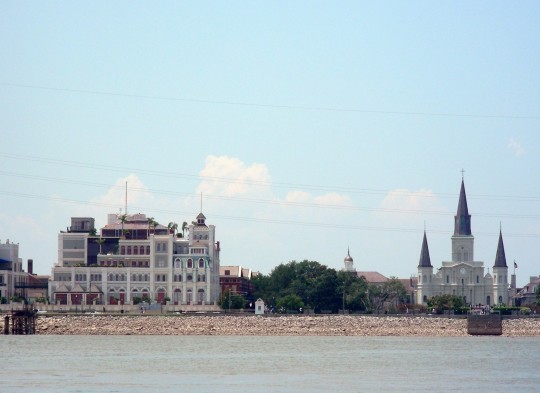

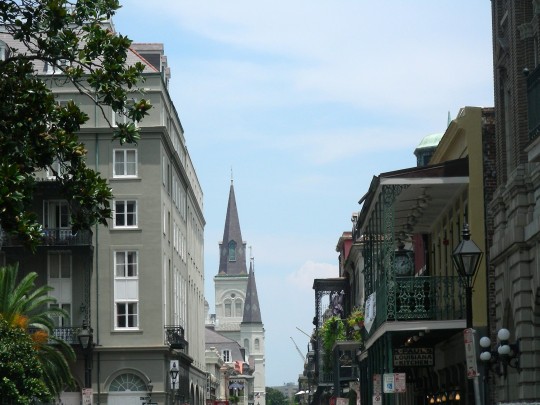
The Great New Orleans Fire 1788 left most of the town in ruins on March 21, 1788.
#Saint Louis Cathedral#Jackson Square#Bourbon Street#French Quarter#USA#New Orleans#Louisiana#summer 2009#original photography#travel#architecture#cityscape#street scene#Crescent City Connection#vacation#Mississippi River#Great New Orleans Fire 1788#235th anniversary#US history#tourist attraction#landmark#burned down#balcony#Big Easy
38 notes
·
View notes
Text
Prince Poniatowski in the battle of Šabac (1788)
On the occasion of 235th anniversary of Austrians taking the Turkish fortress Šabac (now a place in Serbia) let me tell you more about Józef Poniatowski’s participation in it.

Austrian soldiers carry the wounded Prince Józef from the battlefield of Šabac (engraving)
That time Józef Poniatowski was a colonel in the Austrian Army, that Austro-Turkish war was his first military campaign. As the historian Szymon Askenazy wrote prince Józef volunteered already for the first assault; participated in taking the outskirts of the stronghold, which was being defended by a janissary named Mehmed-aga Fočić.
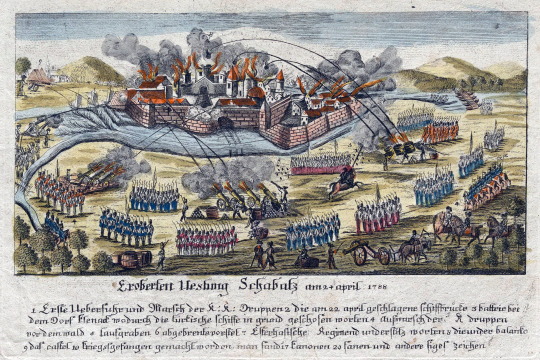
The conquered fortress of Šabac on April 24, 1788, Austrian engraving
Then, in the morning of the 24th of April colonel Poniatowski personally leading with extraordinary bravado a column storming the castle itself and having barely made it through the ditch with a few men to the very parapet of the fortress was hit there by enemy fire.

An illustration by Zbigniew Łoskot
The bullet struck prince Józef in the thigh, and from the battlefield he was saved by a Croatian private named Karol Kerner whom the prince later generously rewarded and who then stayed a in Poniatowski’s service for many times.
Poniatowski himself was then transferred to the lazaret in Semlin, and the diligent medical care saved him from imminent disability.

The taking of Šabac on April 24th, 1788, Austrian engraving
And yes, it was during the earlier stages of that battle when prince Józef saved a man himself, and this man was Karl, prince von Schwarzenberg, Poniatowski’s pal of that time (and future adversary during the battle of Leipzig).
10 notes
·
View notes
Text
Ey, I'm walking here celebrating New York State's 235th anniversary!
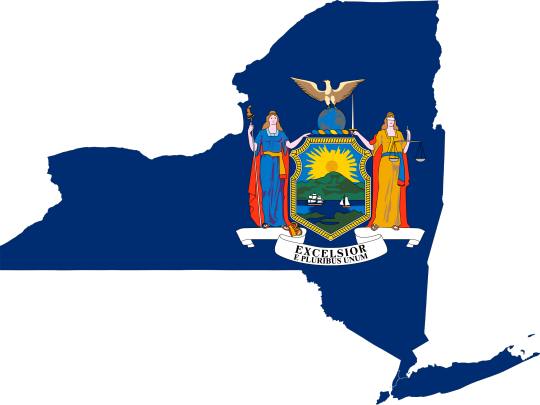
2 notes
·
View notes
Text
youtube
Christian Jürgensen Thomsen
Friday 29 December 2023 was the 235th anniversary of the birth of Christian Jürgensen Thomsen (29 December 1788 – 21 May 1865), who was born in Copenhagen, Denmark, on this date in 1788.
Quora: https://philosophyofhistory.quora.com/
0 notes
Text
Today in History: August 23, Sacco and Vanzetti executed
On this date: In 1947, 1st Baseball Little League World Series, Williamsport, Pennsylvania: Maynard Midgets beat Lock Haven All Stars, 16-7.
By The Associated Press
Today in History
Today is Wednesday, Aug. 23, the 235th day of 2023. There are 130 days left in the year.
Today’s Highlight in History:
On Aug 23, 1927, amid worldwide protests, Italian-born anarchists Nicola Sacco and Bartolomeo Vanzetti were executed in Boston for the murders of two men during a 1920 robbery. (On the 50th anniversary of their executions,…

View On WordPress
0 notes
Text
Maryland 235th Anniversary of Statehood
Happy 235th Anniversary of Statehood to Maryland! Maryland is a state with a rich history, diverse culture, and natural beauty#Maryland235 #RealEstate #FindABroker #DreamHome #Relocation #Moving #StatehoodAnniversary
Maryland ratified the U.S. Constitution on April 28, 1788; it was the seventh of the original 13 states to join the Union. Its area was reduced with the cession in 1788 and formation in 1791 of the District of Columbia, resulting in generally the same boundary as the present state.
Moving to Montgomery County, Maryland: A Guide to the Best Neighborhoods
If you’re considering a move to…

View On WordPress
0 notes
Text
Australia Day Focuses on Black Recognition in Constitution : Inside US
CANBERRA, Australia (AP) — Australians marked the 235th anniversary of British colonization Thursday with a public holiday that evokes anger at Indigenous injustice, focusing national attention on a new government push to acknowledge Australia’s first inhabitants in the constitution.
The government joined several large corporations in allowing staff the choice of taking the holiday off or…

View On WordPress
0 notes
Text
happy 235th wedding anniversary to ross and d.emelza.... you crazy kids.....
0 notes
Text
The Royals are busy! Thank you!😊❤️❤️❤️❤️
Royal diary
7th October:
– The Earl of Wessex, Royal Honorary Colonel of the Royal Wessex Yeomanry, will visit the Challenger 2 Ranges at Lulworth Camp, Dorset.
– The Countess of Wessex will be in the north west. As President of Brainwave, she will visit the Brainwave North West Centre, Warrington, Cheshire, before opening a new new Outdoor Activity Centre at Sandiway, Northwich, and finally visiting the Tarporley War Memorial Hospital.
– The Princess Royal will visit the Minchinhampton Centre for the Elderly to mark the 25th Anniversary, Horsfall House, Stroud, Gloucestershire. She is their patron.
– The Duke of Gloucester will visit Morocco for five days
9th October:
– The Princess Royal is heading to Japan for the Rugby World Cup. Anne is Patron of the Scottish Rugby Union, and will attend the Scotland vs Russia match at Kakegawa Stadium, Fukuroi, Shizuoka.
10th October:
– The Duke of Sussex is heading to Nottingham to mark #WorldMentalHealthDay. Prince Harry will join an Epic Partners session with Nottingham Academy students to discuss emotional wellbeing and share his own experiences He will also and visit Community Recording Studio, who teach youth music/video skills.
– The Princess Royal, President of the UK Fashion and Textile Association, will visit John Smedley to mark its 235th Anniversary, Ginza, Chuo-ku, Tokyo. In her role as Patron of Save the Children UK, the Princess will meet with staff working in Fukushima at the British Embassy in Tokyo. She will also receive members of the Tokyo Organising Committee of the Olympic and Paralympic Games at the British Embassy, as Anne is Chair of the International Olympic Committee Members Election Commission.
– The Duchess of Gloucester, Patron of Parkinson’s UK, will attend a reception at Buckingham Palace.
11th October:
– The Queen will open the Centenary Development at Haig Housing Trust in Morden, as their patron.
– The Earl of Wessex will tour the new South Transept Exhibitions and attend Evensong at Winchester Cathedral.
– The Princess Royal, Chair of the International Olympic Committee Members Election Commission, is to visit Uminomori Olympic Cross Country Course and the Baji Koen Equestrian Centre in Tokyo. Anne will also attend a reception at the British Embassy in her role as patron of the Scottish Rugby Union, meeting staff whilst there. Princess Anne is to meet the new Japanese Emperor, His Imperial Majesty Emperor Naruhito, and his wife, Her Imperial Majesty Empress Masaka, at the Akasaka Imperial Palace.
12th October:
– The Princess Royal has a hugely busy day. She will: visit Commonwealth War Graves Commission Hodogaya Cemetery, Yokohama, Kanagawa, Japan, attend the Riding for the Disabled Association Japan Annual Championship, attend a luncheon reception Yokohama Country and Athletic Club, attend a UK Food and Drink Exhibition at the British Embassy, Tokyo, attend a product launch at Globe-Trotter,, and end the day with a dinner at the British Embassy. These events relate to her work as President of the Riding for the Disabled Association, Patron of the Scottish Rugby Union, and as President of the UK Fashion and Textile Association.
13th October:
– The Princess Royal, Patron of the Scottish Rugby Union, will attend a reception at Yokohama Creative City Centre, Yokohama, Kanagawa, Japan. In her capacity as President of the Mission to Seafarers Limited, Princess Anne will attend a Church Service and reception at Yokohama Christ Church.
13th October:
- The Princes of Wales will attend the canonization of 19th-century British religious scholar Cardinal John Henry Newman as a saint at the Vatican
October 14-18
– The Duke and the Duchess of Cambridge will make a visit to Pakistan at the request of the Foreign and Commonwealth Office
39 notes
·
View notes
Text


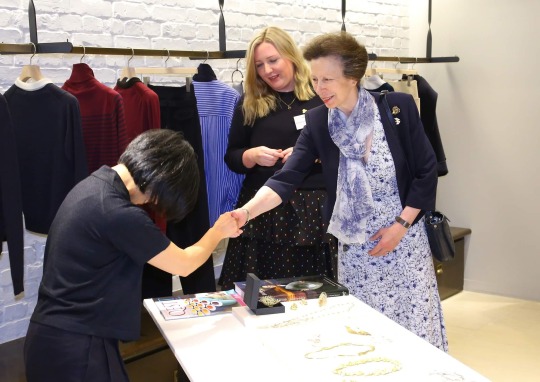
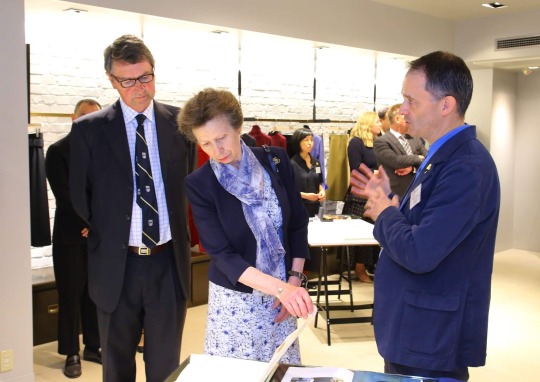
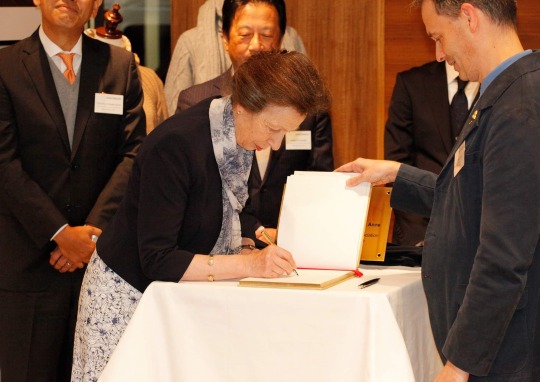
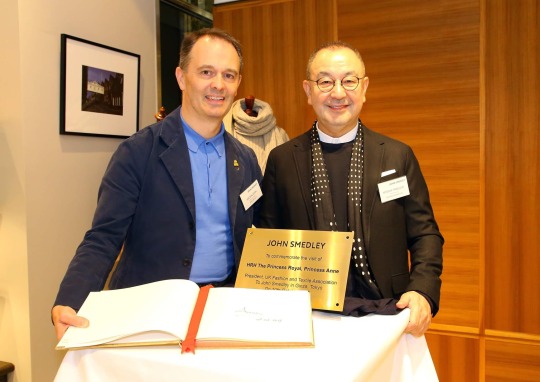


Princess Anne, President of the UK Fashion and Textile Association, and Sir Tim Laurence visiting John Smedley to mark it’s 235th Anniversary in Tokyo, Japan | 10 October 2019
#i love this outfit on her#japANNE#princess anne#princess royal#tim laurence#timothy laurence#my parents#british royal family#brf#anne does stuff
40 notes
·
View notes
Text


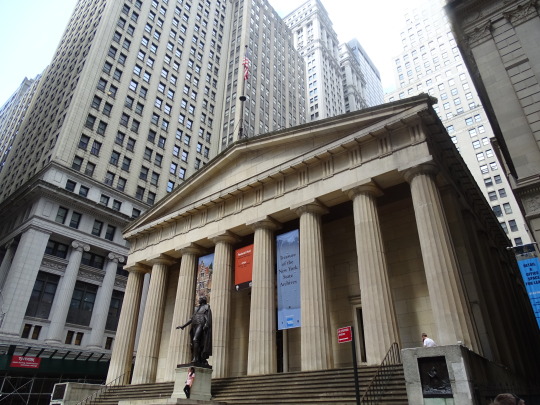





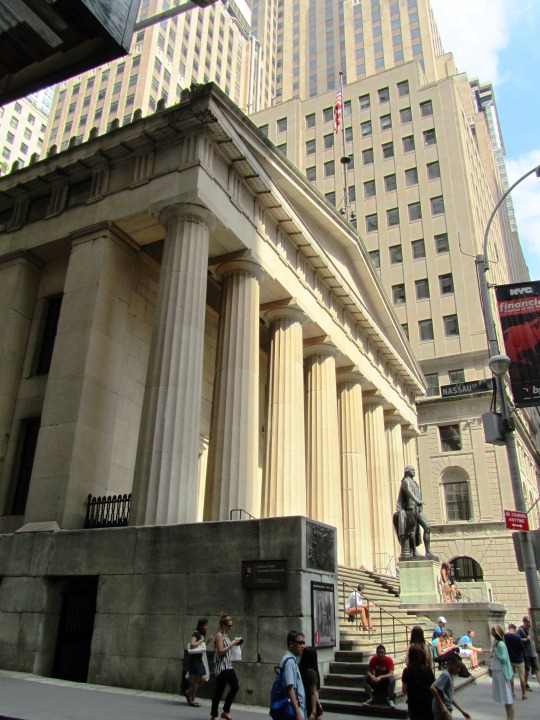

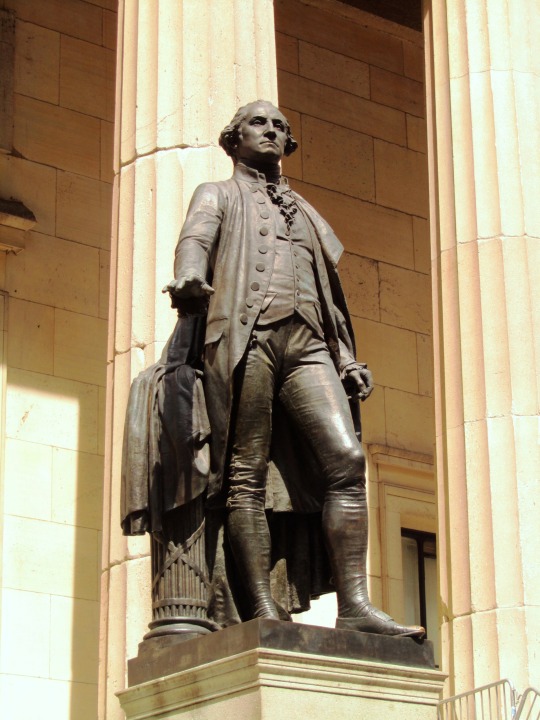
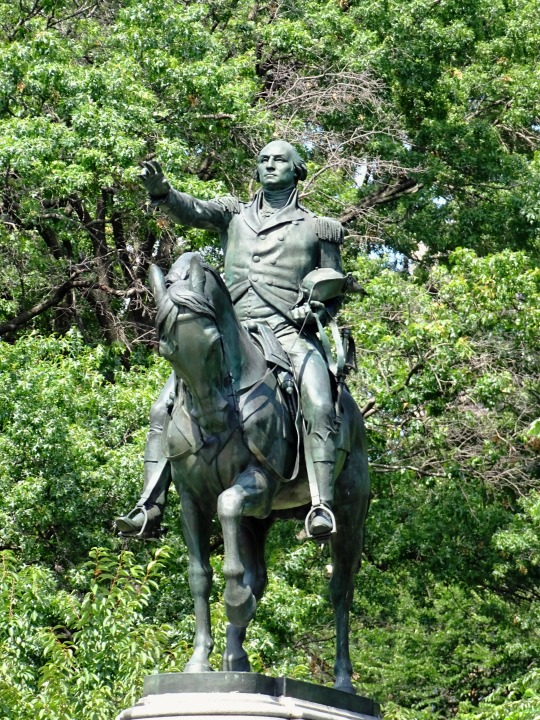



On the balcony of Federal Hall on Wall Street in New York City, George Washington takes the oath of office to become the first elected President of the United States on April 30, 1789.
#George Washington#takes the oath#first elected President of the United States#1st US president#Federal Hall#Lower Manhattan#New York City#30 April 1789#235th anniversary#US history#architecture#sculpture#public art#façade#Greek Revival architecture#Federal Hall Memorial National Historic Site#landmark#tourist attraction#John Quincy Adams Ward#USA#summer 2013#travel#vacation#tourism#original photography#cityscape#Mount Rushmore National Memorial#South Dakota#2018#2019
6 notes
·
View notes
Photo
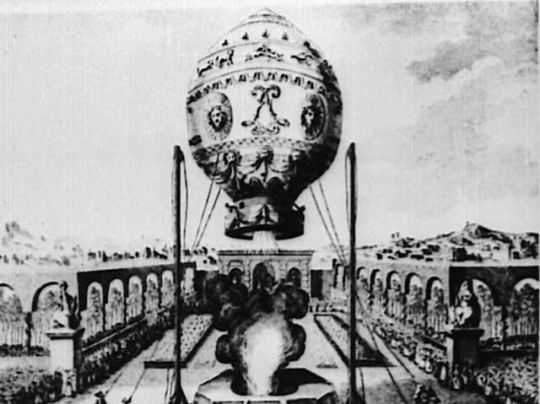
The 21 November marks the 235th Anniversary of the first untethered hot air balloon flight. Jean-François Pilâtre de Rozier and François Laurent d'Arlandes made the flight over Paris. Celebrate this unique form of transport with these films. https://ift.tt/2qUv08D
3 notes
·
View notes
Text
SEUNGRI in ‘I Live Alone’, A ‘Talent Millionaire’ Who Needs More Than 24 Hours… ‘No. 1 Among Friday Variety Programs’

[스포츠조선닷컴=이지현 기자] SEUNGRI revealed his Gatsby-like ‘talent millionaire’ aspects, who needs more than 24 hours a day. He displayed unexpected charms including his fluent foreign language skills, cross-stitching skills, and even sociability, different from what he used to show as BIGBANG’s SEUNGRI. He also had an unexpected breast milk talk with Lee Siyoung who lives next door, making the viewers burst into laughter. The nationwide viewing rate for the part 2 section was 13% according to Nielson, and was placed at no. 1 in viewing rate among all variety programs that aired on Friday.
The 235th episode of MBC ‘I Live Alone’ (Planned by Jeon Jinsoo / Directed by Hwang Jiyoung, Im Chan) displayed SEUNGRI’s daily life that covers everything from work, hobbies, to friendship and Jun Hyunmoo’s fan-meeting that was held in 4 years. According to the data measurement company Nielson, the viewing rate for the 235th episode of ‘I Live Alone’ was marked at 8.3% for part 1 and 12.8% for part 2 in the capital area. The part 2 was rated as the no. 1 among all Friday variety programs broadcasted through terrestrial networks.
SEUNGRI is known for his glamorous lifestyle and parties, but his daily life was rather humble. He chose instant food as his breakfast and finished his humble composed of rice and one side dish.
However, the real twist began as he started eating his meal. He surprised the members of the rainbow club by showing the CEO side of him while managing his tasks through various languages including Korea, Chinese, English, and Japanese. Jun Hyunmoo and Lee Sieon showed respect for SEUNGRI by asking him, “Can I call you older brother?”, making the viewers burst into laughter.
After finishing his meal, SEUNGRI revealed his unusual hobby, cross-stitching. The members of the rainbow club came up with a ‘SEUNGRI decuplet’ theory since he was moving so diligently without rest, making the viewers burst into laughter. When he spotted a pink thread while he was calmly cross-stitching, he listened to a song by BLACKPINK and raised his mood.
The baby shoes SEUNGRI was embroidering was for the woman living next door, who recently gave birth to a child. He started packaging his gift but wasn’t so good at it, unlike his outstanding cross-stitching skills, which made the viewers laugh. He gave up the packaging and tried to tie a ribbon, but also failed although he got help from his mother, revealing his unexpected sloppiness charms.
After the ups and downs, SEUNGRI finished the packaging and prepared to go out while he chose his outfit at a room filled with suits. The members of the rainbow club were in awe at SEUNGRI’s room with clean clothes as if it was a store from a department store and his CEO aura. He explained his passion for new fields by stating, “I want other medals now since I have a medal named BIGBANG”.
The place SEUNGRI headed for was the neighboring house. It turned out that Lee Siyoung and her husband were SEUNGRI’s neighbors. He handed over the gift embroidered by himself, and Lee Siyoung expressed her gratitude by stating, “This is so pretty. Did you make this by yourself?”.
While the two people were having a conversation, SEUNGRI asked for advice on TAEYANG who recently got married. Lee Siyoung told a story which her husband tried to breastfeed the baby himself to make him stop crying, and even promised to give him some breast milk soap while explaining its effects. SEUNGRI’s eyes were shaking at the continued breast milk conversation since he was single and wasn’t used to the topic, which made the whole studio burst into laughter.
After departing with Lee Siyoung, SUENGRI headed to the office for his restaurant business. He walked into the company in an imposing manner as if it was a scene from a drama, and displayed his CEO aura as he signed approval documents while receiving briefings from his employee. A preview of SEUNGRI’s Gatsby lifestyle followed, making people highly anticipate the second part of SEUNGRI’s daily life.
Furthermore, Jun Hyunmoo preparing for his fan-meeting which was held in 4 years was also displayed in the show. He started his ‘Cha-Cha-Cha’ class with Park Jiwoo, a dance sports athlete. He easily succeeded in following the basic steps of Cha-Cha-Cha, but became more like a wooden doll as more moves were added, making the viewers burst into laughter. Park Jiwoo continued the Spartan training by bringing in a posture-correcting stick, completing the class through trial and error.
After a couple days, at the date of the fan-meeting, Jun Hyunmoo started rehearsing at the location. He sat in front of the piano and played the soundtrack of ‘La La Land’, while his unusual playing style made Henry doubt his own eyes. However, he finished the rehearsal including both the piano performance and the Cha-Cha-Cha performance without any big mistakes. While Jun Hyunmoo was waiting for the fan-meeting, he was nervous since he couldn’t sense anyone at the scene. He dropped to the floor again as he saw the quiet scene through rainbow live, even though it was only 10 minutes before the performance. Therefore, people are raising curiosity on how many fans showed up on his fan-meeting, which will be covered next week.
As mentioned above, the first 5th-anniversary special edition of ‘I Live Alone’ revealed SEUNGRI’s unexpected daily life. SEUNGRI displayed his humble businessman aspects rather than what he used to show as a member of BIGBANG. From dealing with his tasks professionally to his unexpected hobby, cross-stitching, his new and unexpected charms gave joy to the viewers watching the show.
After the broadcast, viewers responded enthusiastically by stating, “SEUNGRI needs more than 24 hours a day”, “I couldn’t even imagine that SEUNGRI’s hobby was cross-stitching”, “SEUNGRI and Lee Siyoung’s breast milk conversation made me laugh so hard, it made me cry, lol”, “Jun Hyunmoo is so funny even when he’s awkward in dancing!”, “I wonder how many fans showed up in Jun Hyunmoo’s fan-meeting? I’m curious~”.
Meanwhile, ‘I Live Alone’ is a popular single life trend leader program that displays various lifestyles of single household celebrities.
2018. 3. 10.
108 notes
·
View notes
Photo

🇪🇸 Fira de Santa Llúcia 2021🎄 I am so happy I got to experience the very last day of Fira de Santa Llúcia. Let me tell you about “Fira de Santa Llúcia” which means the Festival of Lights. This festival started back in 1786 (235th Anniversary) in front of the Catedral de Barcelona & occurs every holiday season from 11/26 until 12/23. Fira de Santa Llúcia is a giant Christmas market that sells very traditional Catalan Christmas gifts, including the Nativity sets, Caganer, and Tió de Nadal, which all happens to revolve around 🎄 & 💩. Barcelona has 3 very unique traditional Catalan Christmas traditions. 1. Nativity Set: You buy a Nativity set (Pictures 5 & 6) and you add a new tiny piece to it every year in hopes that you will complete it one Christmas Day. 2. Caganer: You will find a Caganer figurine (Pictures 7 & 8) of a pesant taking a poop 💩 in every Nativity scene. There ain’t no Christmas nativity without him in Catalonia. 3. Tió de Nadal: This is an adorable Christmas tree log with a Santa hat and a face (Picture 9). People will hit the face of the Tió de Nadal & sing to it so it can poop Christmas presents 🎁 I am looking forward to spending my first Christmas in Barcelona. Bon Naval 🎄✝️ #barcelona #spain #catalonia #firadesantallúcia #ciutatdenadal #bonnaval #christmas #nativity #caganer #tiodenadal #tradition (at Fira de Santa Llúcia (Barcelona)) https://www.instagram.com/ixdeelicious/p/CX15s2QI7dS/?utm_medium=tumblr
#barcelona#spain#catalonia#firadesantallúcia#ciutatdenadal#bonnaval#christmas#nativity#caganer#tiodenadal#tradition
0 notes
Text
a great big meta about musical!Laurens
... presented on this occasion of the 235th anniversary of his death.
Let’s just get this out of the way: the John Laurens of Hamilton isn’t a very well-developed character. That doesn’t mean Lin did a bad job writing him, it just means that he didn’t have a lot of time to work with, and had to be very economical with his storytelling. In the play we see a Laurens who drinks a lot, who’s hotheaded and a good shot, who likes Hamilton, who’s constantly working against slavery… and then he’s dead. Compared to historical Laurens or even some incarnations of fanon Laurens (which often draw heavily on historical Laurens), musical Laurens can kind of fall flat. And it’s not like he looms large in the source material: Chernow mentions Laurens on a few dozen pages out of a 750-page book. So why is this character in the musical at all? Or rather, what structural purpose does the character of John Laurens serve in Hamilton? In my opinion, he’s more important than you might expect. I think Laurens’ optimism, recklessness, and determination are emblematic of the simple conflict of Act I, and his death late in Act I is a major inflection point in both Hamilton’s character arc and the tone of the play more generally, driving the transition to the moral ambiguity of Act II.
More under the cut, because The Meta It Is Very Long
You’re the closest friend I’ve got: Laurens and Hamilton’s character
Ultimately, this is a musical about Hamilton’s place in history, and so it makes sense that when Lin was trying to condense such an enormous story down to two and a half hours that most of the other characters got boiled down to who they were to Hamilton. So who was Laurens to Hamilton, in the context of the musical?
First of all, I am almost certain that historical Laurens and Hamilton were romantically/sexually involved. Other, better blogs than mine have spilled much ink on this subject. But there’s not much mention of their romantic relationship in the musical. There has been… much discourse on this topic, which is irrelevant for what I’m going to say here. What’s important is that someone could walk out of the play as it stands right now and not have any hint of a more-than-brotherly relationship between Hamilton and Laurens. (Yeah, in some productions they walk arm-in-arm a lot. This… does not count.) Purely for the purposes of this essay, I’m not really interested in whether or not the musical is accurate. Rather, I’m looking at it as a constructed work of fiction, and how it works as a narrative, not as a work of history.
So, if musical Laurens isn’t a lover to Hamilton, who is he?
1) His best friend and political ally
This one’s pretty self-explanatory. Laurens admires Hamilton as early as “Aaron Burr, Sir,” and is the one who first recognizes Hamilton’s political brilliance and begins his rise to fame in “My Shot” (“let’s get this guy in front of a crowd!”). Whether he’s laughing like a dork in the background of “Farmer Refuted” or working together with Hamilton during “Stay Alive,” they’re together for most of the war portions of the first act.
Another example of best friend-ship: when Hamilton is stymied in his desire to punish Lee for his fuckery at the Battle of Monmouth, Laurens offers to step into place. I’m not saying this was a great idea on Laurens’ part, and it gets Hamilton in trouble, but… look, you guys have all seen the Internet cliché that a good friend is the one who bails you out of jail and a best friend is the one giggling in the cell next to you. For better or for worse, that’s Hamilton and Laurens.
2) A terrible role model
Let’s take the “for worse” side of that first, shall we? Regardless of whose idea it was, in “Stay Alive” Laurens is the one who challenges Lee to a duel. As Hamilton’s best friend, Laurens probably plays a big role in defining what Hamilton thinks of as acceptable conduct. He kicks off “Ten Duel Commandments” and narrates commandments 1 (if they apologize, no need for further action), 2 (if they don’t, grab a friend, that’s your second), and 4 (if they don’t reach a peace, that’s alright/ time to get some pistols and a doctor on site).
Interestingly, Hamilton has the more aggressive and death-focused lines in the song (countering Burr’s “negotiate a peace” with “or negotiate a time and place” + “Leave a note for your next of kin/ Tell ‘em where you been. Pray that hell or heaven lets you in” + the final escalation with Burr that’s all about whether potentially killing Lee would be justified). While this doesn’t make much sense to me given all we know about historical Laurens, if we ignore that context and think only in terms of the musical, giving these lines to Alexander “I imagine death” Hamilton is not only reasonable characterization, it also establishes an association between duels and death… and duels and Hamilton and death… and duels and Hamilton and Laurens and death. Keep those in mind for later.
Regarding Hamilton’s character arc, Laurens does two important things in the duel: he shoots to kill and he remains unscathed. By wounding Lee, Laurens establishes the high stakes of duels. He also sets the precedent that a character we like—one of the “good guys”—has the option of straight-up wasting a guy in a duel without the narrative being too fussed. (Washington’s concern about the duel is that it will piss off their allies to the South—he doesn’t seem to see anything wrong with dueling in general.) This makes both Philip’s and Alexander’s choices to hold their fire in their own duels more morally meaningful. If it was just the thing we expected them to do as “good guys” it wouldn’t hold as much narrative weight.
Laurens also isn’t harmed at all by his duel, either physically or politically. This makes Philip and Hamilton seem slightly less insane for dueling later in the play—after all, there’s a chance this might turn out okay! We saw it happen with Laurens. So, not only does Laurens set up the idea of duels as acceptable ways to resolve disputes, he also gets away from his without experiencing a single negative repercussion! Narratively, this expectation is… not fulfilled. But by setting up a precedent with Laurens and then breaking it, Lin is able to heighten the impact of the later duels.
3) A moral light
Okay, now for the good side of Laurens’ friendship. Hamilton positions the Revolution as a war of uplift (literally—how many times do they say “rise up,” again?), but John Laurens is the only character who consistently (/ever) wants to make that uplift inclusive. I’ve seen some critique of his characterization as being flattened by his laser-focus on slavery, but it’s super important from a narrative standpoint to have someone in-story pointing slavery out, just in case the meta aspect of having PoC playing almost all the characters flies over our heads. In-story Laurens is the one who highlights that the revolution is not inclusive, that they need to be uplifting everyone. He even has a gender-inclusive call to arms in “My Shot” (“tell your brother that he’s gotta rise up/ tell your sister that she’s gotta rise up”).
Critically, Laurens’ fight for freedom is for everyone—he explicitly says “we’ll never be truly free/ until those in bondage have the same rights as you and me,” and, more pithily, “we’ll never be free until we end slavery.” There’s no room for hypocrisy in Laurens’ moral universe—if one person is left out of the revolution, it isn’t a true revolution. His absolute, no-exceptions approach and single-minded determination are a sharp contrast to the Act II wheeler-dealer political horse-trading of Hamilton, Jefferson, and Madison and the bald ambition of Burr. Laurens has something that every politically-oriented character in Act II lacks: a political goal with moral clarity and purity of purpose. (Of course, every one of those characters manages to survive to Act II, unlike Laurens, so the ultimate utility of Laurens’ approach is… up for debate.)
Laurens’ constant fight against slavery represents optimism and idealism that the characters can get the revolution right and spread freedom for all, even as it (meta-narratively) points out their failure to have done so. He also pushes Hamilton towards greater opposition to slavery (in “Stay Alive”). As the audience, we know that slavery is the central, high-stakes moral battle of early America, and it’s at the top of our minds given the prominence of PoC in the cast. So Laurens having an eye on slavery even while everyone else is focused on winning the war is pretty striking, and seeing him push Hamilton further towards abolitionism gives us hope. Even though we know from history class that the battle against institutionalized slavery won’t be won until the Civil War, we can at least hope that Hamilton will be on the right side of it.
I may not live to see our glory: Laurens’ death as a turning point
Let’s talk about the narrative structure of Hamilton. For a long time, I thought that Act I and Act II were simply two opposite arcs. In Act I Hamilton rises; in Act II Hamilton falls. (Fun fact: in the six basic story shapes, this is called the “Icarus.”) And going along with that, each act has its own set of rules and expectations. Act I, for all its drama, doesn’t have much in the way of hard choices or interpretive challenges for the characters (except Angelica, but other folks have already written better meta about her). You win or you lose, you live or you die, you’re right (like Alex and John) or you’re wrong (like Lee). And mostly those categories line up: the winners are right, and they live (except some extras). The losers are wrong, and they die/are defeated. Hamilton starts out as a Cinderella story, both for Hamilton and for America, in which the underdog rises up and, in spite of incredible odds, succeeds. The good guys wear blue, the goal is to stay alive, and the morality of the world is simple.
But once the war is won, the character-driven political tragedy of Act II emerges, and all the easy old equivalences start to break down. A criminal blackmailer gets off scot free, an innocent is murdered, a smart man makes a series of incredibly stupid choices. In addition to defying Act I’s fairytale good-guys-win logic, Act II is a much more morally ambiguous place. The challenge (as assessed by Washington, when he says, dying is easy, young man, living is harder) of Act I is “living”—which is not to say that staying alive is easy, but rather that, as a goal, it isn’t complicated. In Act II, the challenge shifts to “governing” (winning was easy, young man, governing’s harder). And with governing comes compromise, and sacrifice. As Burr puts it, to accomplish your political agenda you must, “hold your nose and close your eyes.” The art of political deal-making isn’t for the faint of heart or stomach. In the face of this compromised and complicated world, Hamilton’s internal flaws, just as much as his enemies, lead to his downfall.
But then I started thinking about Laurens and his relationship with the rules of Act I, and I realized something strange was going on. Laurens thrives in the simple moral world of the war. Remember, in most of Act I winning, rightness, and survival all go together. As the character who never shuts up about ending slavery, Laurens is the most prominently morally right guy in the play. And along with that rightness comes victory in battle-- not only does he shoot Charles Lee, at one point he and the Bullet kill a redcoat with their bare hands. So at first, Laurens’ story seems to be perfectly adhering to the rules of Act I.
Despite this, when the rules of Act I start to fray, they do so first for Laurens. This happens in a moment that I want to bring attention to in “Yorktown” (you can see it even better around 6:20 in the B roll footage). In the stunned moments following the British surrender, Laurens says, “Black and white soldiers wonder alike if this really means freedom.” And Washington, looming over the company from high on the balcony, says, “Not yet.” There’s a sudden minor chord like a blow being struck, and the company drops. It’s like every single member of the ensemble has been simultaneously punched in the stomach. Washington, the history-wise audience knows, has made the political and personal calculation that ending slavery would be too costly.
In this moment, in defiance of the usual Act I rules, Laurens’ youth and egalitarian idealism collide directly with Washington’s political cunning—and lose. Before we even see the full triumph of Yorktown, Laurens’ dream of ending slavery is over. Twenty stage-seconds after the war ends, and already the simple equivocation between being right and winning breaks down. We’re moving into the murkier political drama of Act II, where being morally right is no guarantee of victory—and even allies like Washington aren’t necessarily morally right. Laurens’ failure to secure the end of slavery ushers in a loss of the hope that the America’s moral problems can be solved as easily as her military problems.
The moment that Washington dashes Laurens’ idealistic plans to end slavery marks the beginning of the end for the “Act I rules”, but the complete break doesn’t occur until Laurens’ death in the Laurens Interlude/ “Tomorrow There’ll Be More of Us.” Brutally, the news that he’s dead comes two whole songs after the victory at Yorktown, at which point the audience believes all of our favorite soldiers have made it out alive. Even more brutally, the song immediately preceding Laurens’ death is “Dear Theodosia,” a sweet and simple ode to new life. The precedents set before in Act I are shattered—just as with the duels, Lin sets up expectations only to break them. In a world where the good guys not only survive, but triumph, you wouldn’t expect the character most closely aligned with political moral goodness to die in battle when there isn’t even a war anymore. To anyone unfamiliar with Laurens’ personal story, his death is a stunning blow. What’s more, it heralds a shift in the internal logic of the play.
The Laurens Interlude also represents a shift in Hamilton’s character. Remember, Laurens fights for equal application of America’s ideal of freedom to all people, and pushes his friend Hamilton to do the same. Laurens’ death closes the chapter on young, idealistic Act I Hamilton. Act II Hamilton, as effective as he is politically at first, fails to live up to his ideals. He hypocritically screams at Maria for an affair that’s just as much his fault as hers; he pays off a blackmailer to avoid telling his wife about the same affair; and he casually abandons his old friend Lafayette in “Cabinet Battle #2.” He even adopts Burr’s “talk less, smile more” strategy to get his debt plan through—an amazing reversal given his bafflement and criticism at that same strategy in Act I. And tellingly, he almost totally abandons the issue of slavery. It’s clear he’s still disgusted by it when he mocks Jefferson in “Cabinet Battle #1.” But he never goes further than that, and Lin even preserves historical Hamilton’s line calling the Washington administration “unconscious of intentional error” (for why this is historically totally inaccurate re: slavery, see this post). So, both in the specific case of slavery and in other cases, the Hamilton we see in Act II compromises his values where Act I Hamilton might have fought.
Act I Hamilton is hotheaded and lacks a certain degree of common sense, but he’s fighting for a just cause against an oppressive government. Act II Hamilton is fighting for America to be run the way he thinks best, but the problems he’s solving, and the approaches he takes to solve them, are all practical/ pragmatic ones (e.g., let’s start a national bank to get our credit working, let’s not help France because the situation is too chaotic). Clearly he grows less idealistic and more practical, and I think the start of this shift isn’t the act break, but actually the end of the Laurens Interlude. In fact, I think Laurens’ death precipitates it.
Hamilton’s reaction to Laurens’ death is understated but devastating. He slumps, there’s a long period of silence, and then finally he chokes out, “I have so much work to do.” This isn’t a call back—it’s a call forward to one of Jefferson’s first lines in Act II: “now the work at home begins.” And just like the music, Hamilton points himself forward. The news of Laurens’ death spurs Hamilton into a manic spiral of productivity. After all, Laurens’ dream dies with him, and Hamilton doesn’t want the same fate to overtake his own legacy… so he starts building frantically, launching immediately into the juggernaut that is “Non-Stop.” An astonished Burr even asks him, “why do you write like you’re running out of time?”—a question Hamilton never answers. He bounces from Albany to the Constitutional Convention to the Federalist Papers without the music so much as pausing for breath. And we should note that the majority of Hamilton’s “so much work” is self-assigned. He didn’t have to write any Federalist Papers, much less 51 of them. This is a man dealing with a severe existential crisis via workaholism.
Musically, Hamilton succeeds in crowding Laurens out of the story in “Non-Stop.” The song brings together almost every single motif of Act I — except the ones that Laurens is associated with (more on these in the last section). I think the score here supports the idea that Hamilton’s frantic activity during “Non-Stop” is to distract himself from the pain and existential crisis caused by Laurens’ death. But in doing so, he leaves behind more than just his pain. He also leaves behind much of the idealism that Laurens pushed him towards in Act I. With his overriding focus on his legacy as a whole, he’s willing to make sacrifices and compromises that Laurens might never have taken.
Even though I just said that musically “Non-Stop” is a roundup of Act I themes, it actually comes after the Laurens Interlude. If my idea is correct that Laurens’ death is where the play transitions from the simple moral world of Act I to the complicated moral world of Act II, then “Non-Stop” should actually be spiritually closer to Act II, since it falls after the Interlude. I think the evidence supports this idea. First, we get the moral complication that is characteristic of the Act II when we witness Alexander’s first truly skeezy emotional move of the play: he steals Eliza’s own melody (“Look around, look around…”) to justify sacrificing time with his family in favor of his work and the legacy he wants to build. Second, Burr introduces the audience for the first time to a serious character flaw of Alexander’s: he’s great at giving his enemies the tools to destroy him. The conflict in the play has evolved: it’s no longer Continentals vs. redcoats, but rather Alexander’s brilliance against his own self-destructive tendencies. This foreshadows multiple partially self-inflicted conflicts in Act II that will prove fatal to Alexander’s political career, (almost) marriage, son, and self. Third, I’ve already talked about how most of Act I deals with the struggle for survival/ living, and Act II deals with the challenges of governing. “Non-Stop” is all about governing, and culminates in Hamilton’s ascent to a position of power in government. As such, even though the musical themes are looking back to Act I, the story and character arcs have already landed in the more complex world of Act II. This supports the idea that the Laurens Interlude, and the loss of idealism and optimism that it represents, is the true pivot point of the play.
Shout it from the rooftops! Musical motifs
Laurens initiates three different leitmotifs:
1 ) He starts up the “whoa whoa WHOA-oh-oh”s in “My Shot.” These are, properly speaking, a melodic line to go along with the “My Shot” chord progression, which is in turn one of Hamilton’s leitmotifs. This dovetails neatly with Laurens’ narrative place: he’s Hamilton’s good friend, hence him sharing Hamilton’s chord progression in this moment, and he helps him developing and disseminate his political ideas. Howard Ho, in his fantastic musical analysis of the show, calls the melody that Laurens adds on top a “call to violence in the name of honor.” Laurens is getting the rest of the crowd—and the audience—pumped up to revolt.
Incidentally, this moment seems to be a jolt for Hamilton, because he goes straight into his first “I imagine death so much…” verse here, and has some clear reservations about the anarchic atmosphere that Laurens is stirring up (“And? If we win our independence?/ Is that a guarantee of freedom for our descendants? / Or will the blood we shed begin an endless / Cycle of vengeance and death with no defendants?”). This signals a gap between Hamilton’s and Laurens’ approaches to violence — Hamilton’s already thinking far into the future, to his legacy, while Laurens is thinking about the here and now. And with Hamilton’s focus on his legacy — that guarantee of freedom for his descendants — that very focus drives him to momentarily shy away from Laurens’ call to violence. Would it be too much of a stretch to say that this foreshadows Hamilton’s and Laurens’ different decisions about whether to shoot in their respective duels? Probably. But at the very least, it shows that Hamilton and Laurens aren’t in lockstep as far as methods go, even as their goal — revolution — is the same.
2) Laurens is the first to use the phrase “Rise up!” in “My Shot,” a call to action that is subsequently taken up by the ensemble. This is an explicit call to revolt, but for Hamilton, it has a double meaning: not only is he rising up against Britain, he’s also rising up in society.
3) Laurens is the first to “raise a glass to freedom” in “The Story of Tonight.”
After an absence for almost all of Act II, Laurens’ “My Shot” melody recurs in “The World Was Wide Enough.” What’s it doing there? I think one possibility is that it’s meant to evoke nostalgia about the young and idealistic days of the early revolution, before the morality of the show falls into the light-gray vs dark-gray struggles and failures of Act II. When Hamilton sees Laurens on the other side, he even identifies the melody (the “soldier’s chorus”) by name, this time explicitly linking it to the military past they share. But that ignores the tension of the moment, right as Hamilton and Burr are gearing up for the duel. It sounds foreboding, almost ghostly, and I think it’s meant to recall Laurens’ own young and senseless death, right before Hamilton is about to die, also too young and senseless. If this connection seems tenuous, maybe more evidence will convince you: Hamilton frantically reprises “rise up” in bullet-time during “The World Was Wide Enough,” and “raise a glass to freedom” is the last thing we hear Hamilton say. In other words, Laurens originates a total of three musical motifs in Hamilton, and all three of them recur immediately before Hamilton’s violent, tragic death. So the absence of these motifs from the end of Act I doesn’t mean they’re gone forever. Like death, they can only be postponed, and they find their way home here. With them comes Act I’s simple dichotomy: live, or die.
But in Act II, we’ve learned that life—and victory—aren’t as simple as we thought in Act I. Though Hamilton loses the duel, he wins his legacy, while Burr survives and reaps terrible consequences. Hamilton can’t follow in Laurens’ footsteps—he can’t shoot—because to do so would be to destroy his political legacy. Hamilton’s decision not to shoot causes terrible pain for Hamilton’s surviving family; it’s a sacrifice he makes with great regret. But the rules of Act II no longer allow Hamilton to both “win” the duel (survive it) and “win” his legacy, the way Laurens was able to get away with in his duel when the Act I rules still applied. And so, in order to preserve his legacy, Hamilton must hold his fire. Just as Laurens both wins (the war) and dies, so will Hamilton—but for him, because of the perverse logic of the duel, to win he must die. Laurens’ leitmotifs guide Hamilton away from the musical world of the living into the musical world of the dead. This is to be Hamilton’s last battle, and he marches into it with the memory of Laurens by his side.
213 notes
·
View notes
Photo

#KurdsBetrayedByTrump The 235th anniversary of the cultural capital of Kurdistan, Sulaimani is today. The Kurds have a rich history and LOYALTY that must be respected. #Repost from @insidekurdistan (@regrid_) - • In 1784 the beautiful city of Sulaimani was founded by Ibrahim Pasha Baban. Soon it became home to many poets, musicians, writers, and other artists. Today marks the 235th anniversary of Kurdistan's cultural capital. Happy Birthday! 🎉 ──────────────────── #FreeKurdistan #Kurdistan #Kurdish #Kurds #Kurd #Kurdî #Kurmancî #MiddleEast #Mesopotamia #Anatolia #Başûr #Bakûr #Rojhilat #Rojava #Pêşmerge #Peshmerga #YPG #YPJ #AlaRengîn #Serhed #Botan #SelahattinDemirtaş #FreeDemirtaş #Wêne #Wênekêş #Silêmanî #ÎbrahîmPaşaBaban #Damezirandin (at Sulaimani) https://www.instagram.com/p/B43xbnBATRK/?igshid=hpyh1nw8lggg
#kurdsbetrayedbytrump#repost#freekurdistan#kurdistan#kurdish#kurds#kurd#kurdî#kurmancî#middleeast#mesopotamia#anatolia#başûr#bakûr#rojhilat#rojava#pêşmerge#peshmerga#ypg#ypj#alarengîn#serhed#botan#selahattindemirtaş#freedemirtaş#wêne#wênekêş#silêmanî#îbrahîmpaşababan#damezirandin
0 notes